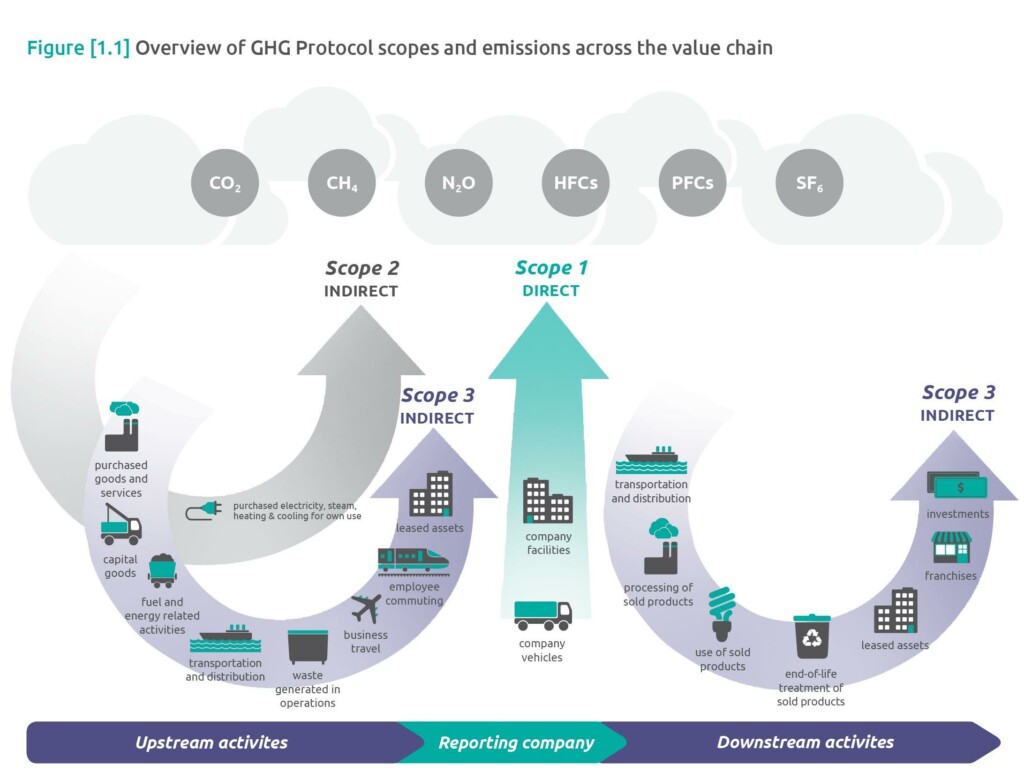Understanding Carbon Emissions: Scope 1, 2, and 3

Scope 1, 2, and 3 are essential categories for classifying carbon emissions generated by a company within its own operations and across its value chain. These terms were first introduced in the Green House Gas Protocol of 2001 and have now become the foundation for mandatory GHG reporting in the UK.
Scope 1 Emissions
These encompass the direct Green House Gas (GHG) emissions produced by a company, such as those arising from running boilers and vehicles.
Scope 2 Emissions
These include the indirect emissions, which occur when the company purchases electricity or energy for heating and cooling buildings, and this energy is produced on its behalf.
Scope 3 Emissions
The most complex category to grasp, Scope 3 includes all the emissions not directly controlled by the company but for which it holds indirect responsibility throughout its value chain. These emissions arise from various sources like product suppliers and customer usage of the company’s products. In most cases, Scope 3 emissions are the most significant contributors to a company’s carbon footprint.

Source: ghgprotocols.org
Understanding Carbon Emissions
Points to understand about Scope 1, 2, and 3 emissions:
- Control and Influence: Scope 1 and 2 emissions are largely within a company’s control, as they arise from its direct operations and energy procurement. Data to convert these emissions into GHG values is typically available in departments like procurement, finance, estates management, or sustainability functions.
- Solutions for Scope 1 and 2: Many companies can achieve net-zero emissions for Scope 1 and 2 by adopting solutions such as sourcing renewable electricity and gas or transitioning to electric vehicles and electrifying heat demand.
- Impact of Scope 3: For most businesses, Scope 3 emissions make up over 70 percent of their carbon footprint. Manufacturing companies, for instance, incur substantial emissions from the extraction, production, and processing of raw materials.
- Limited Control over Scope 3: Addressing Scope 3 emissions poses a challenge, as businesses have less direct control over these emissions. Collaborating with suppliers to reduce emissions and reviewing the supply chain are options, but suppliers’ decisions and product design heavily influence emissions reduction.
Understanding and managing Scope 1, 2, and 3 emissions are crucial steps for companies to effectively address their carbon footprint and contribute to a sustainable future.
We believe that Facilities Management organisations have the opportunity to lead the way in measuring Scope 3 emissions which is why we have set up a robust research programme which will include producing a framework :
Our Scope 3 Research Programme
How we can help
Find out more about the SFMI, speak to an expert or get involved in our Scope 3 Research
Scope 3 Emissions in FM
Read about our Scope 3 emissions research programme to build a framework for measuring and reporting across the value chain.

Scope 3 Enhancement plan
Find out how our Scope 3 Enhancement Plan could help your business with measuring and reporting supply chain emissions.
